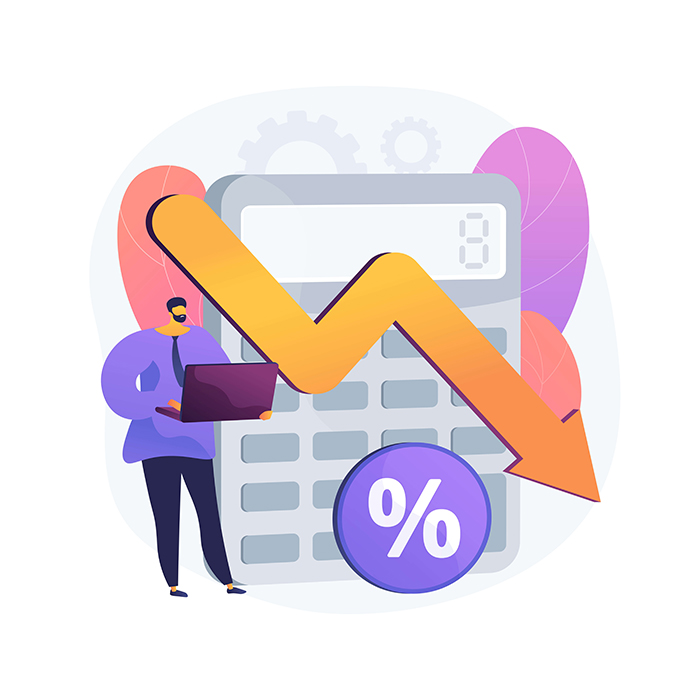
How Much Technical Debt Is Your Business Taking On?
Are you aware of how much technical debt your business is taking on?
Wondering, right? Tech debt might sound daunting to you. Often, organizations must be attentive to the existence of tech debt, which is critical to their success or failure.
Undoubtedly, technologies are the vehicle for the progress of businesses in this digitalized age. On the other hand, poor technical decisions may result in tech debt. If not rectified on time, this can lead to greater development costs, long-time-to-market, and a reduction in productivity. Therefore, with so much at stake, it is necessary to know how to manage technical debt on a priority basis to gain a competitive edge and be on top.
This article aims to help you find answers to what technical debt is, how does it develop, and more.
So, let’s begin!
What is technical debt?
Technical debt refers to cutting corners during software development to achieve short-term results at the expense of long-term efficiency. Simply put, it results from prioritizing speedy delivery over perfect code.
When developers use inadequate coding solutions to meet a deadline, they “get into debt” and need to pay back in the form of rework in the future. The truth is that things can start to slow down because of technical debt.
Now, the question is how it can develop. There are many ways tech debt can accumulate. Discover it in the next section.
How does technical debt develop?
Technical debt can develop due to specific actions or blunders, and product / business owners should be aware of these. Here are a few caution signs you must be attentive of:
Talent: Gaps in tech skill availability can limit organizational capability, postpone product delivery to users, and create resource risks. In addition, failure to align goals and a team focusing on delivering short-term features overlooking efficiency can create a situation of tech debt.
Process: Development and Deployment is overly dependent on the developer’s input. Poor Management of the development process can result in poor quality code and inadequate documentation, which can cause rework, thereby accumulating technical debt.
Approach: An absence of a transparent overall company approach, a lack of enterprise-level capability definitions, or connections between the road map and the capabilities can be another caution sign for tech debt.
Software Architecture: Software architecture is another major factor in the rise of technical debt. Developing inflexible software with heavily customized packages, poor interface blocks that limit reusability, and insufficient use of standard system integration approaches can contribute to an organization’s tech debt.
What happens when it gets too high?
When technical debt gets too high, it creates a negative situation where an organization needs to overcome several hiccups. These include:
- System downtimes, poor user interface, and lower system performance, thus enhancing customer dissatisfaction.
- Reduction in the quality and progress of product development leads to delays in product deployment, release plans, and product roadmaps.
- Increased tech debt makes systems more complex, with overlapping processes and customizations.
- As such, the product becomes more expensive to maintain over time. It causes an increase in the total cost of ownership and a reduced return on investment for enterprises or business owners simultaneously.
- Organizations have to spend more time, money, and resources to overcome the issue rather than focusing on getting potential customers and close sales.
How can increased Tech debt affect your Business?
Unlike financial debt, technical debt can also create roadblocks in any business’s development path.
Here are five ways how tech debt can affect your business:
Slows forward movement: Your growth becomes stalled. Instead of addressing new change requests, the development team spends hours, days, or weeks wrestling with the crude code to bring the result to a point where future changes will be easy and prevent the system from crashing. Here are five ways how tech debt can affect your business:
Badly designed code: To meet deadlines, the developers often rely on shortcuts bypassing the traditional protocol of writing clean code. As a result, the developer eventually delivers a messy code structure with hypothetically low readability.
Have a look at the few warning signs of subpar design:
- Utilizing a code style only once and avoiding constant behaviour
- Omitting descriptive names that provide more context for each module
- Haphazardly connecting code modules
While a poor code structure that prioritizes quantity over quality can help you achieve deadlines, on the other hand, it makes it harder for subsequent developers to contribute to the same project in the future when asked for the addition of new features or upgrades.
Changeable performance: Bug fixes, system crashes, and engineers’ capacity – are all part of the technical debt a product with changeable performance carries. You are accumulating technical debt to remedy a section of hurriedly written code. Quick release may give rise to bugs in the code, resulting in the need for technical debt to address them.
Exhausted productivity: Escalating tech debt can drain your progress and cut the organization’s output. Whenever you wish to add new features, it becomes challenging for your development team to add the components due to poorly designed code. And eventually, the same goes for the QA team while testing the software for bugs. Overall, this can delay the deployment of your product, resulting in loss of profit and delays in time to market.
Testing Stress: The QA code testing team may miss tests due to a tight deployment deadline. They may also promise to address missed tests later, which is a no-no and can incur technical debt. It can negatively affect your business because you’re launching a product that has either undergone hasty testing or inadequate testing.

The Bottom line
Maintaining a proper balance between speed and quality is critical for any organization to overcome an increased technical debt.
Tech debt is a saga that never seems to exist, but if not taken care of, it can cripple your firm. The sooner you take the necessary actions to alleviate yourself from technical debt, the faster you can reduce the risk and keep up with your competitors. Since the type of each tech debt varies in different scenarios, building an effective strategy is essential to pay off your technical debt.
For any queries or consultation, contact our experts today!
Share this post
About the Author

Sujoy Roy
(Head – Digital Marketing)
From my teenage time, I had a quench to solve problems and loved leadership. Starting my career in relation management, ignited my passion for managing people. While managing I realized technology needs to be incorporated to keep pace with the changing world & do my work efficiently.

